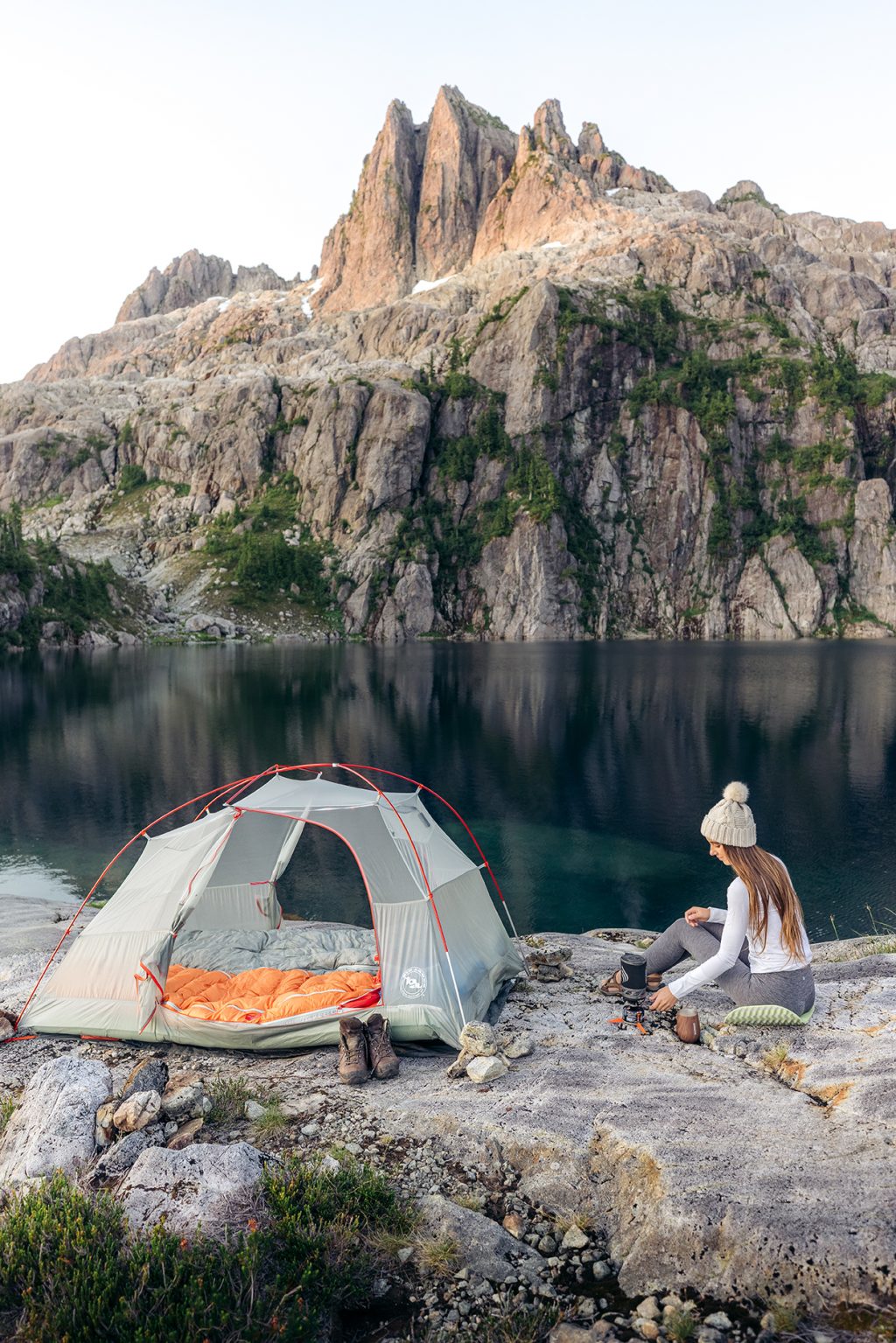The hiking and backpacking world is filled with ultralight gear designed to help make your next trip more comfortable. The downside of many of these items is the expense; it often seems like the less there is to something, the more it costs. An exception to this are sit pads—like the EMS Siesta Folding Sit Pad—which weigh next to nothing, can greatly improve your on-trail experience, and are super affordable. Don’t have one in your kit? Here are 10 reasons to take a sit pad on your next hiking or backpacking trip.

What is a Sit Pad?
At their most basic, sit pads are something that you carry while hiking or backpacking that you can sit on. They don’t absorb moisture (keeping your butt dry), offer a barrier between you and the ground (helping your kit stay clean), and provide padding (increasing comfort). Sit pads encompass a fairly broad spectrum of products ranging from repurposed old sleeping pads to fancy inflatables, however, most are purpose-built and made from closed-cell foam.
In general, sit pads are light and versatile pieces of gear that are easily tucked into the exterior pocket or back panel of a pack, or strapped to its exterior.

10 Reasons to Add a Sit Pad to Your Hiking/Backpacking Kit
1. Use It to Sit On
The most obvious use for a sit pad is, as the name implies, to sit on it. The outdoors is filled with a number of magical things—sweeping mountain vistas, remote swimming holes, and quiet backcountry campsites to name a few. However, one thing often in short supply is a good place to sit. A sit pad can turn unappealing places to take a break—like a snow-covered clearing, soaking wet log, or rough rock—into an ideal place to take a load off.
2. Use It to Sort Your Kit
Just as you don’t want to sit in the snow or the wet grass of a high mountain meadow, you also don’t want to rest your kit on it. This is especially true for expensive electronics like a fancy camera, phone, external battery, and all the associated cords. Use a sit pad, like the EMS Siesta, as a 15×12 inch sorting station and keep your gear dry and protected.
3. Use It as a Tray
Similar to keeping your expensive electronics off of the ground, you can use a sit pad as a tray to sort small items, keeping them from getting lost in soft snow, forest duff, or long grass. For example, you can rummage through the contents of your first-aid kit on it when digging for the ibuprofen buried at its bottom.
4. Use It for First-Aid
Speaking of first aid, a sit pad is a valuable addition to your first aid kit if you ever have to improvise a splint. Pair it with some climbing tape, ski straps, or get creative with the straps on your pack to stabilize/immobilize an injured area.
5. Use It As a Doormat
Ultralight shelters are built with a lot of things in mind, such as weight and packability. Further down the line of considerations is the ease of getting in and out of them. A sit pad provides a great spot to kneel while setting up the inside of your shelter—like blowing up your sleeping pad and unpacking your sleeping bag—and a handy place to rest your feet while getting in and out of it.

6. Use It to Supplement Your Sleeping Pad
There are a variety of ways in which a sit pad can complement your sleep system. For instance, use it under your head and shoulders as an improvised pillow or slide a sit pad under the hip area (a common cold area for side sleepers) or foot box (a common cold area for women campers) of a sleeping pad to add extra warmth. Another popular use for a sit pad is to balance out an uneven sleeping area.
7. Use It As a Backup Sleeping Pad
While most campers wouldn’t want to spend a night sleeping on a sit pad, it’s better than nothing and provides a solid alternative if your sleeping pad springs a leak.
8. Use It in Your camp Kitchen
A sit pad is a welcome addition to any camp kitchen. Use it as a super-sized windscreen or as a platform when cooking in the snow. Place your stove on the sit pad to keep it from sinking in the snow when it heats up. The pad will also reflect back heat, improving your stove’s efficiency.
9. Use It As a Backpack Back Panel
Frameless ultralight packs are surging in popularity with the fast-and-light community. Tucking a sit pad where a back panel would traditionally reside provides protection from odd-shaped and pointy objects in your pack poking you while hiking.
10. Use It As a Place to Stand
Let’s face it, most trailheads are dirt lots that don’t offer a great place to swap trail-appropriate footwear like boots and trail runners for cozy non-performance footwear, like flip flops, commonly worn to and from hikes. This is especially true during mud season. A sit pad offers a great place to stand while swapping shoes.

Another Sit Pad Option
One of the best things about sit pads is that compared to a lot of other outdoor gear, they’re inexpensive. You can get a really nice sit pad, like the EMS Siesta Folding Sit Pad for less than the price of a post-hike pint or two in town. However, if you’re pinching pennies, it’s pretty easy to make your own by simply trimming an old closed-cell sleeping pad to your desired dimensions. In addition to being an extremely affordable alternative, it’s also an excellent way to keep an older piece of gear out of the landfill.
Tim Peck
A former child model, Tim spent a portion of his youth gracing the pages of Sunday paper advertisements for many now-defunct department stores. Living responsibility/rent-free with his parents into his thirties, Tim pursued climbing, skiing, and biking while accumulating an impressive amount of time in the mountains (and gear). Now almost grown up, he lives in central New Hampshire with his wife, Australian Shepherd, and cat. Relentlessly pursuing the dream, Tim's modest life ambitions are to ski all 12 months of the year, climb 5.12, and live in a van.




